-
 Bitcoin
Bitcoin $118400
0.39% -
 Ethereum
Ethereum $3814
2.17% -
 XRP
XRP $3.547
1.34% -
 Tether USDt
Tether USDt $1.000
0.00% -
 BNB
BNB $769.5
2.95% -
 Solana
Solana $191.7
6.36% -
 USDC
USDC $0.9999
0.01% -
 Dogecoin
Dogecoin $0.2722
7.75% -
 Cardano
Cardano $0.8995
5.59% -
 TRON
TRON $0.3158
-0.78% -
 Hyperliquid
Hyperliquid $47.37
4.46% -
 Stellar
Stellar $0.4848
3.54% -
 Sui
Sui $4.031
1.72% -
 Chainlink
Chainlink $20.11
3.94% -
 Hedera
Hedera $0.2832
3.16% -
 Avalanche
Avalanche $26.20
4.27% -
 Bitcoin Cash
Bitcoin Cash $530.5
0.67% -
 Shiba Inu
Shiba Inu $0.00001568
3.59% -
 Litecoin
Litecoin $118.4
1.42% -
 UNUS SED LEO
UNUS SED LEO $8.976
-0.23% -
 Toncoin
Toncoin $3.349
2.54% -
 Polkadot
Polkadot $4.590
2.54% -
 Uniswap
Uniswap $10.56
-0.59% -
 Ethena USDe
Ethena USDe $1.001
0.00% -
 Monero
Monero $327.7
0.39% -
 Pepe
Pepe $0.00001422
2.62% -
 Bitget Token
Bitget Token $4.973
-1.22% -
 Dai
Dai $1.000
0.02% -
 Aave
Aave $331.9
1.59% -
 Bittensor
Bittensor $429.6
-0.56%
What happens to my ETF shares if the issuer goes bankrupt?
ETF assets are legally protected from issuer bankruptcy, ensuring investor holdings remain secure and backed by real assets.
Jul 11, 2025 at 04:15 am
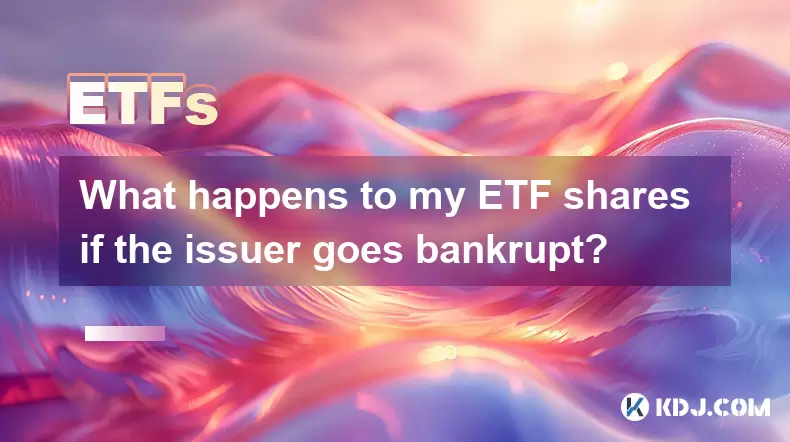
Understanding ETFs and Their Structure
Exchange-Traded Funds (ETFs) are investment vehicles that hold a basket of assets, such as stocks, bonds, or commodities. They trade on stock exchanges like individual stocks and are designed to track the performance of a specific index, sector, or asset class. One key feature of ETFs is their structure, which separates the fund's assets from the issuer’s balance sheet.
The issuer—often an asset management company—creates and manages the ETF. However, the assets within the ETF are held separately in a trust or custodial account. This legal separation is crucial because it means that if the issuer faces financial trouble or even bankruptcy, the underlying assets of the ETF should remain untouched and protected from the issuer’s creditors.
Important:
The structure of ETFs provides a layer of protection for investors, but understanding how this works in practice is essential.The Role of the Trust or Custodian
In most cases, the assets backing an ETF are held by a third-party custodian or trust company. This entity is legally separate from the ETF issuer and is responsible for safeguarding the fund’s holdings. Even if the issuer goes bankrupt, the custodian continues to manage the assets according to the fund’s prospectus and governing documents.
This setup ensures that investors' shares remain backed by real assets, and those assets cannot be liquidated to pay off the issuer’s debts. If the issuer fails, the custodian may appoint a new manager to take over the ETF, ensuring continuity for shareholders.
- Assets are legally separated from the issuer.
- Custodians are often large financial institutions with strong credit ratings.
- New managers can be appointed without affecting investor holdings.
What Happens During an Issuer Bankruptcy?
If an ETF issuer declares bankruptcy, several steps typically unfold:
- The custodian remains in control of the fund’s assets.
- A bankruptcy court or regulator may appoint a successor manager.
- If no successor is found, the ETF may be liquidated.
During this process, shareholders retain ownership of their proportionate share of the fund’s assets. If the ETF is liquidated, investors will receive cash or assets equivalent to their holdings at the time of closure. This outcome depends on whether the custodian can find a new sponsor or if regulatory conditions allow for continued operation.
Important:
While rare, ETF closures due to issuer failure have occurred, and investors generally recover the net asset value (NAV) of their shares.Differences Between Physical and Synthetic ETFs
It's important to distinguish between two main types of ETFs: physical and synthetic.
- Physical ETFs directly own the underlying assets they track, such as stocks or gold.
- Synthetic ETFs use derivatives, like swaps, to replicate the performance of an index or asset.
In the case of a synthetic ETF, there is counterparty risk. If the swap provider (which could be the same as the issuer) goes bankrupt, the ETF might not fully reflect the index it tracks. However, regulations in many jurisdictions require collateralization of these swaps, reducing exposure to this risk.
- Physical ETFs are generally safer in issuer bankruptcy scenarios.
- Synthetic ETFs carry additional counterparty risks.
- Collateral requirements vary by jurisdiction and ETF provider.
Historical Examples and Regulatory Protections
There have been instances where ETF issuers faced financial difficulties. For example, during the 2008 financial crisis, Lehman Brothers was involved in some structured products, but ETFs managed by them were largely unaffected due to their structural protections.
Regulators in major markets, such as the U.S. Securities and Exchange Commission (SEC), impose strict rules on ETF structures to ensure investor protection. These include requirements for transparency, diversification, and segregation of assets.
- No major ETF collapse has resulted in total loss for investors due to issuer bankruptcy.
- Regulatory oversight helps mitigate systemic risks.
- Investors are encouraged to review ETF prospectuses and disclosures.
Frequently Asked Questions
Q1: Can I lose all my money if the ETF issuer goes bankrupt?
No, you are unlikely to lose all your money. Since the assets of the ETF are held separately, you would still own a portion of those assets. In the worst-case scenario, the ETF may be liquidated, and you would receive proceeds based on the fund’s net asset value.
Q2: How do I know if my ETF uses physical or synthetic replication?
You can check the fund’s prospectus or fact sheet, usually available on the issuer’s website. Most ETF providers clearly state whether the fund uses physical holdings or derivatives to track its benchmark.
Q3: Are there any insurance protections for ETF investors?
ETFs themselves are not insured like bank deposits, but the custodians holding the assets often have robust safeguards. Additionally, brokerage accounts may offer protection under programs like SIPC in the U.S., covering losses due to broker insolvency—not market losses.
Q4: What happens if no new manager takes over the ETF?
If no suitable manager is found after the issuer’s bankruptcy, the ETF will likely undergo a liquidation process. Investors will receive cash or assets proportional to their holdings at the time of liquidation.
Disclaimer:info@kdj.com
The information provided is not trading advice. kdj.com does not assume any responsibility for any investments made based on the information provided in this article. Cryptocurrencies are highly volatile and it is highly recommended that you invest with caution after thorough research!
If you believe that the content used on this website infringes your copyright, please contact us immediately (info@kdj.com) and we will delete it promptly.
- WIF Rockets: Riding the Bull Run Wave in Cryptocurrency
- 2025-07-21 18:50:12
- XRP Ledger Heats Up: Network Activity and Trader Buying on the Rise!
- 2025-07-21 18:50:12
- BFX, Altcoins, and ROI: Chasing the Next Big Crypto Wave
- 2025-07-21 18:55:12
- Binance, Seed Tag, and Crypto Tokens: What's the Deal?
- 2025-07-21 19:30:12
- Kaspa Price Surges Amid Layer 2 Buzz: Double Bottom Signals Bullish Momentum
- 2025-07-21 19:30:12
- Cryptocurrencies Surge: BNB Nears All-Time High Amid Market Uptick
- 2025-07-21 19:35:11
Related knowledge

What is the best platform to trade Bitcoin ETFs?
Jul 17,2025 at 03:50pm
Understanding Bitcoin ETFs and Their Role in the MarketBitcoin Exchange-Traded Funds (ETFs) are investment vehicles that track the price of Bitcoin wi...
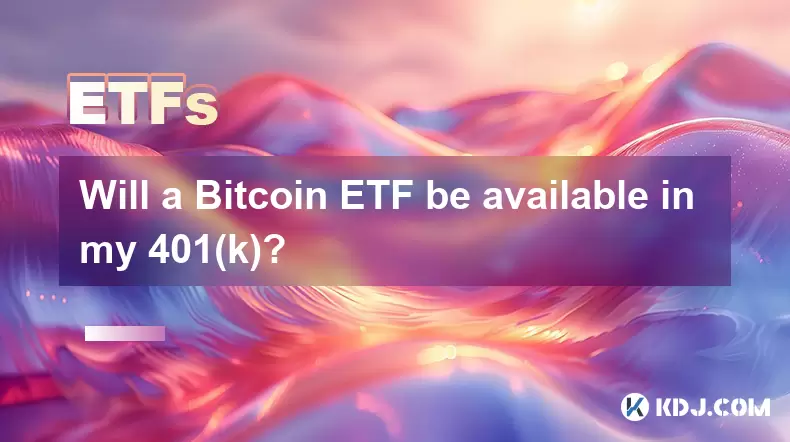
Will a Bitcoin ETF be available in my 401(k)?
Jul 17,2025 at 10:42pm
What is a Bitcoin ETF?A Bitcoin ETF (Exchange-Traded Fund) is an investment vehicle that tracks the price of Bitcoin without requiring investors to di...

Who is the authorized participant for a Bitcoin ETF?
Jul 18,2025 at 12:42am
Understanding the Role of Authorized Participants in Bitcoin ETFsIn the context of Bitcoin Exchange-Traded Funds (ETFs), an authorized participant (AP...
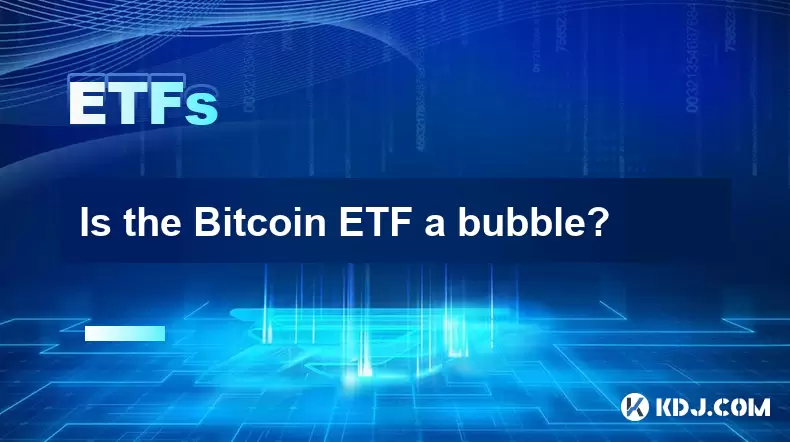
Is the Bitcoin ETF a bubble?
Jul 20,2025 at 06:57am
Understanding the Bitcoin ETF ConceptA Bitcoin Exchange-Traded Fund (ETF) is a financial product that aims to track the price of Bitcoin without requi...
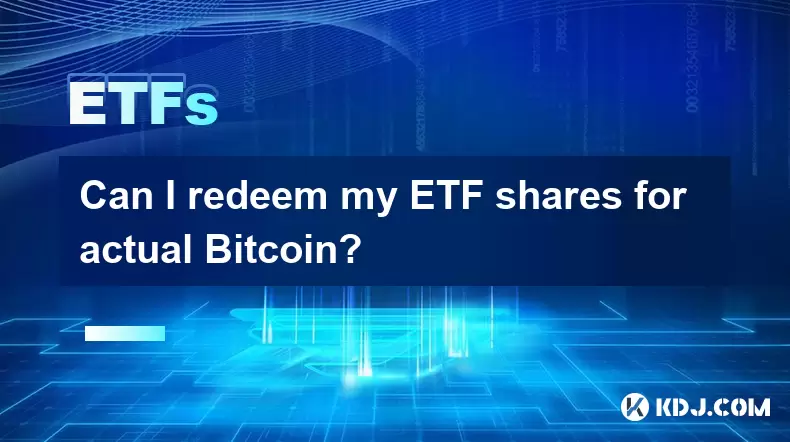
Can I redeem my ETF shares for actual Bitcoin?
Jul 17,2025 at 03:14pm
Understanding ETF Shares and Their Relation to BitcoinExchange-Traded Funds (ETFs) have become a popular investment vehicle for those looking to gain ...
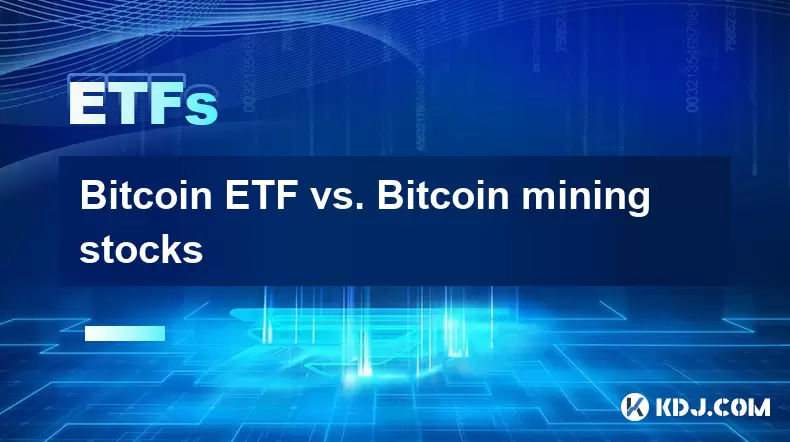
Bitcoin ETF vs. Bitcoin mining stocks
Jul 18,2025 at 04:08pm
What is a Bitcoin ETF?A Bitcoin Exchange-Traded Fund (ETF) is an investment vehicle that tracks the price of Bitcoin and trades on traditional stock e...

What is the best platform to trade Bitcoin ETFs?
Jul 17,2025 at 03:50pm
Understanding Bitcoin ETFs and Their Role in the MarketBitcoin Exchange-Traded Funds (ETFs) are investment vehicles that track the price of Bitcoin wi...

Will a Bitcoin ETF be available in my 401(k)?
Jul 17,2025 at 10:42pm
What is a Bitcoin ETF?A Bitcoin ETF (Exchange-Traded Fund) is an investment vehicle that tracks the price of Bitcoin without requiring investors to di...

Who is the authorized participant for a Bitcoin ETF?
Jul 18,2025 at 12:42am
Understanding the Role of Authorized Participants in Bitcoin ETFsIn the context of Bitcoin Exchange-Traded Funds (ETFs), an authorized participant (AP...

Is the Bitcoin ETF a bubble?
Jul 20,2025 at 06:57am
Understanding the Bitcoin ETF ConceptA Bitcoin Exchange-Traded Fund (ETF) is a financial product that aims to track the price of Bitcoin without requi...

Can I redeem my ETF shares for actual Bitcoin?
Jul 17,2025 at 03:14pm
Understanding ETF Shares and Their Relation to BitcoinExchange-Traded Funds (ETFs) have become a popular investment vehicle for those looking to gain ...

Bitcoin ETF vs. Bitcoin mining stocks
Jul 18,2025 at 04:08pm
What is a Bitcoin ETF?A Bitcoin Exchange-Traded Fund (ETF) is an investment vehicle that tracks the price of Bitcoin and trades on traditional stock e...
See all articles

























































































